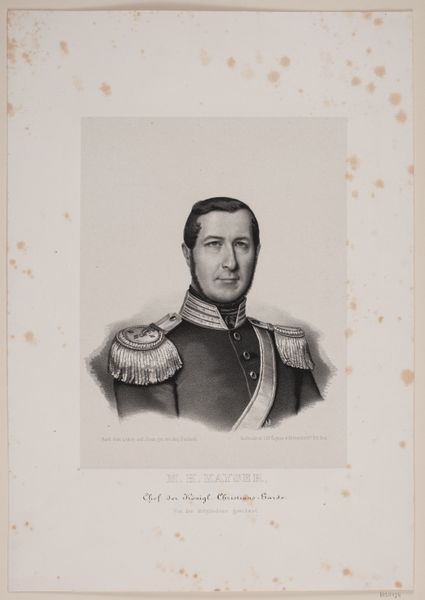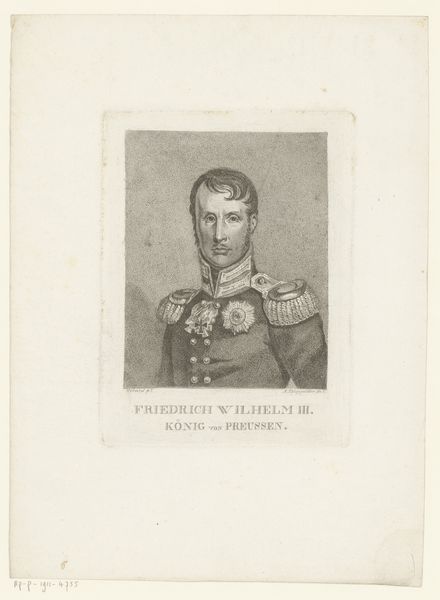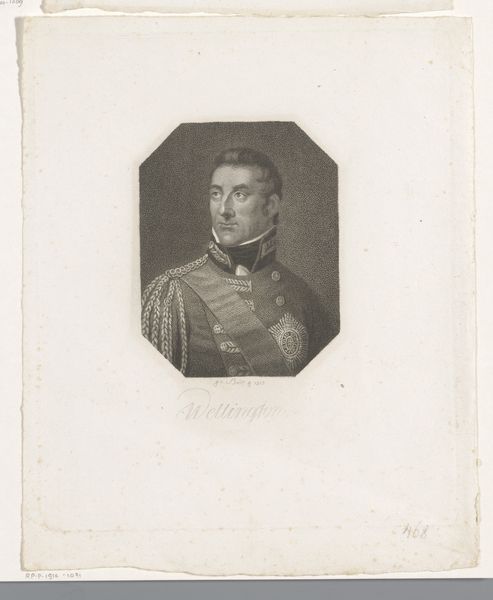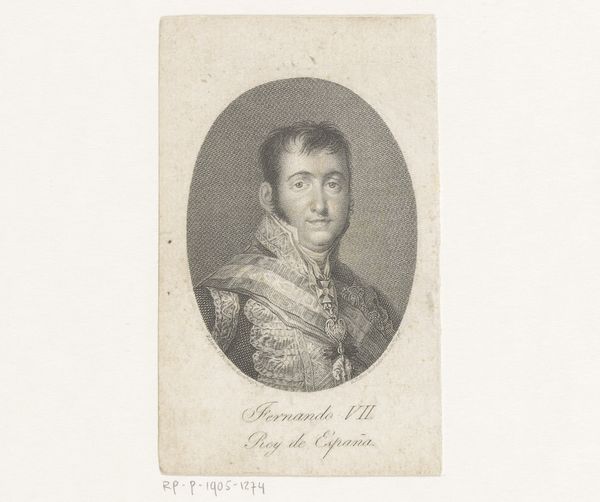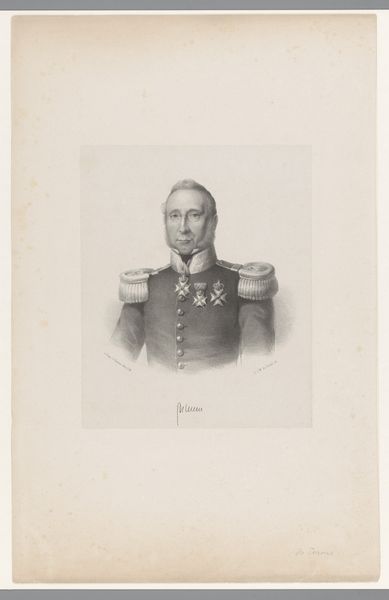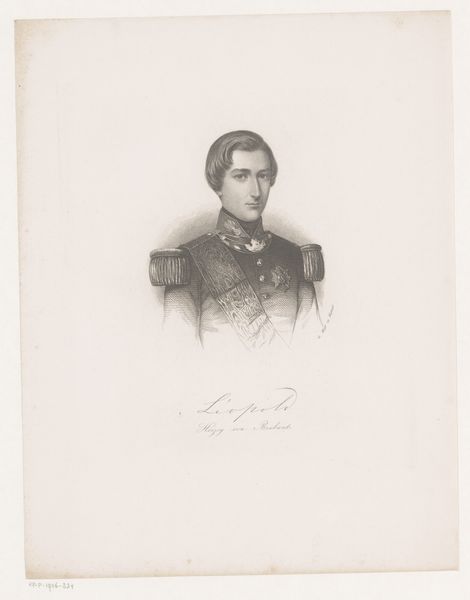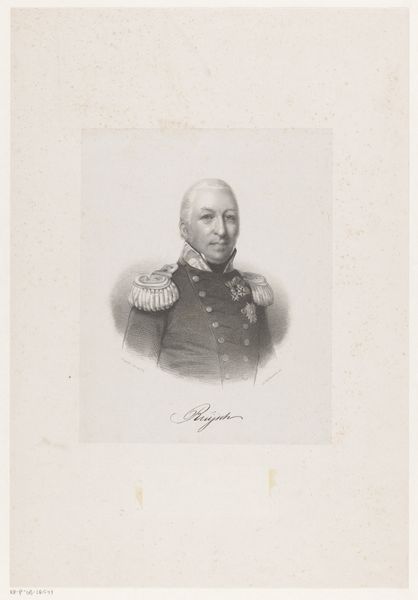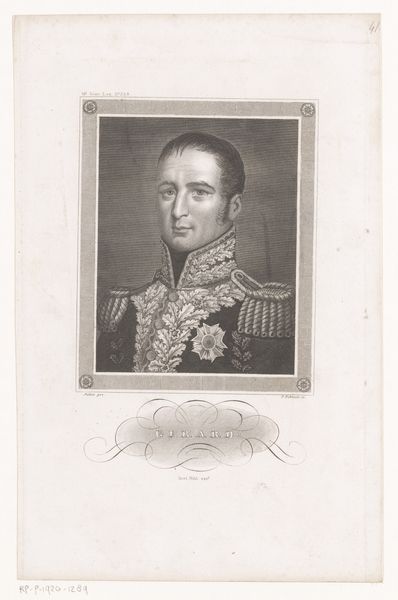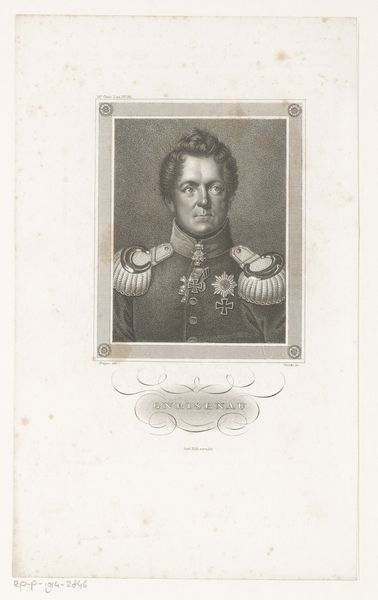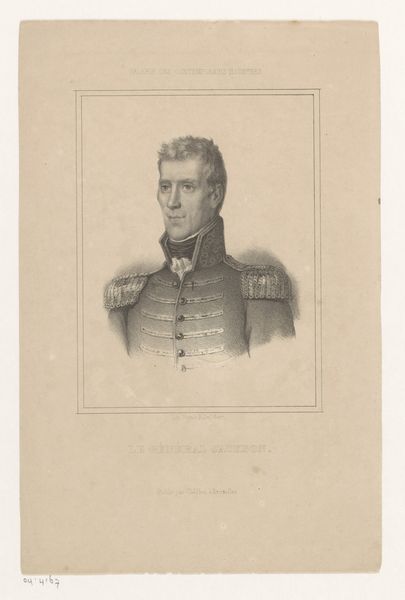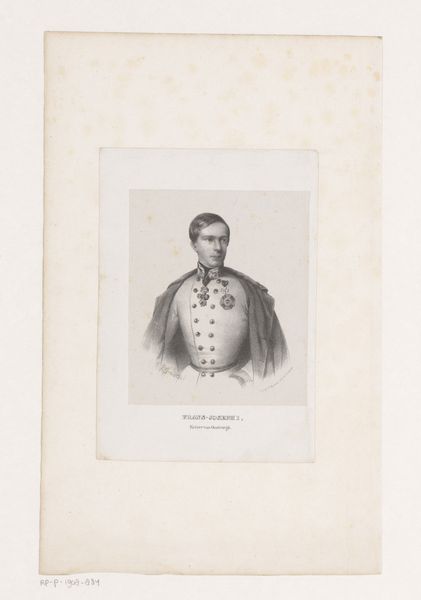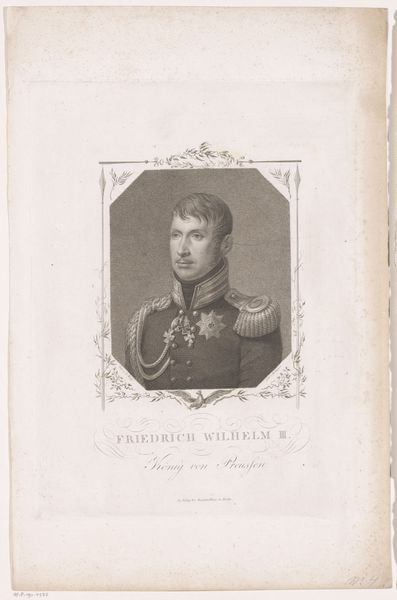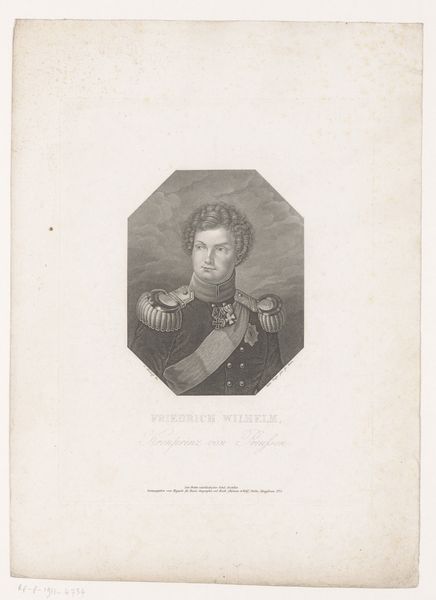
lithograph, print
#
portrait
#
neoclacissism
#
lithograph
# print
#
history-painting
Dimensions: height 273 mm, width 207 mm
Copyright: Rijks Museum: Open Domain
Curator: This is a portrait of Frederick William, King of Prussia, created between 1821 and 1840 by Friedrich Wilhelm Linger, using the lithograph technique. Editor: My first thought is: what a stern-looking chap! It’s formal, yes, with the neoclassical framing, but somehow, the effect feels quite direct and unromantic. Curator: The lithographic process itself is quite interesting here. It democratized image production, allowing for wider circulation of portraits like these. The choice of print medium signifies its potential to reach a broader audience, extending the reach and influence of royal imagery. Editor: Exactly! We have to think about how readily available such images would have been, and what impact it had on solidifying his public persona. Was it strategically distributed? Curator: More than likely, given the socio-political climate. Considering the printmaking technique – lithography – is vital here. Think about the materiality: the stone, the greasy crayon used to make the image, and how each print slightly varies in tone and texture depending on the printer's skill. How widely were these actually seen, beyond aristocratic circles? What other print ephemera might it have accompanied? Editor: Those are valid material concerns. From a historical viewpoint, a king depicted during the rise of nationalism in Europe would naturally utilize portraiture for ideological messaging. It makes me think about other rulers using the power of imagery to project a specific type of image during that era. How much of that was about actual power and how much was about carefully constructed propaganda? Curator: Perhaps both existed simultaneously. The image acts as material culture and is symbolic representation, entangled in larger processes. Think of the social hierarchies implicated in who could afford such prints. It goes beyond just seeing the image itself; who was positioned to actually *possess* a material copy? Editor: I think considering the broader socio-political situation along with his visual presence allows for a more complete reading. Ultimately, art like this speaks volumes about the power dynamics and beliefs operating during that specific time and place. Curator: Indeed. Looking at the materials and production gives another dimension to those considerations and brings us into direct connection with that historical time.
Comments
No comments
Be the first to comment and join the conversation on the ultimate creative platform.
